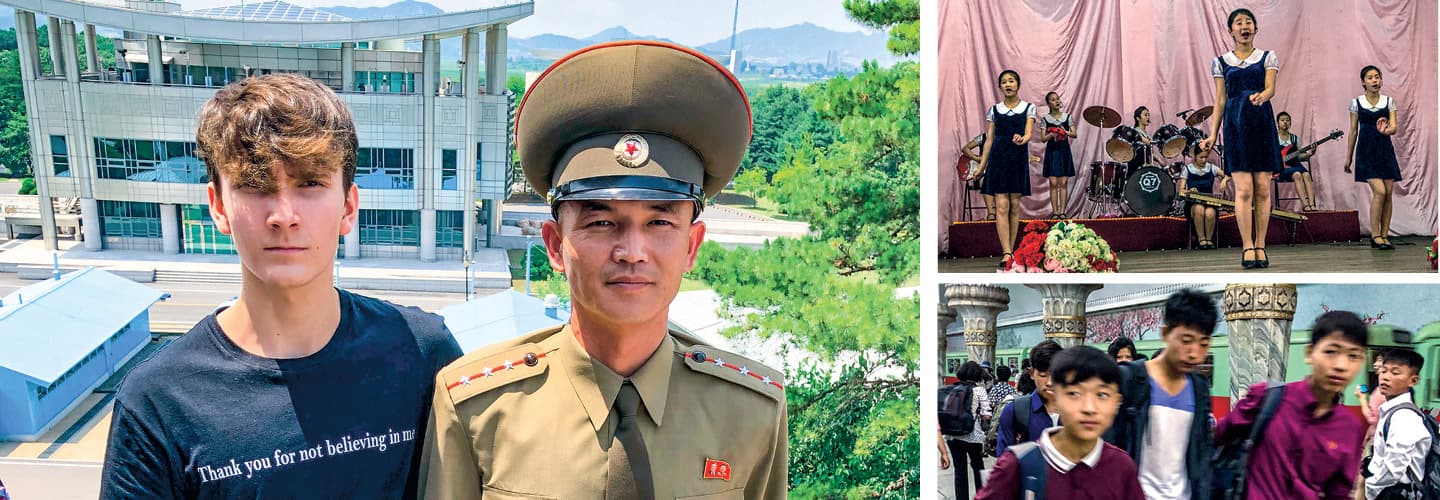North Korea is one of the most isolated, authoritarian, and unpredictable countries in the world. It’s also a nation that the United States has been at odds with for seven decades.
In the Korean War (1950-53), Americans fought against North Korea to prevent the Communist takeover of South Korea. The war ended in a cease-fire but no peace treaty. More recently, North Korean leaders have charged ahead with developing nuclear weapons and have repeatedly threatened to use them.
After decades of frustrated attempts by the international community to negotiate with North Korea, then-President Donald Trump took a different approach in 2018: He met twice with North Korean dictator Kim Jong Un, and the two vowed to work toward peace. But the two countries remain in an uneasy standoff.
In the summer of 2019, Vladimir Somov, then 16, spent a week in North Korea by himself, exploring the country’s monuments and talking to its people. Here’s his account of that experience.
—Upfront
North Korea is one of the most isolated, authoritarian, and unpredictable countries in the world. It’s also a nation that the United States has been at odds with for seven decades.
In the Korean War (1950-53), Americans fought against North Korea to prevent the Communist takeover of South Korea. The war ended in a cease-fire but no peace treaty. More recently, North Korean leaders have charged ahead with developing nuclear weapons and have repeatedly threatened to use them.
After decades of disappointing attempts by the international community to negotiate with North Korea, then-President Donald Trump took a different approach in 2018. He met twice with North Korean dictator Kim Jong Un, and the two vowed to work toward peace. But relations between the two countries remain tense.
In the summer of 2019, Vladimir Somov, then 16, spent a week in North Korea by himself. He used the time to explore the country’s monuments and talk to its people. Here’s his account of that experience.

